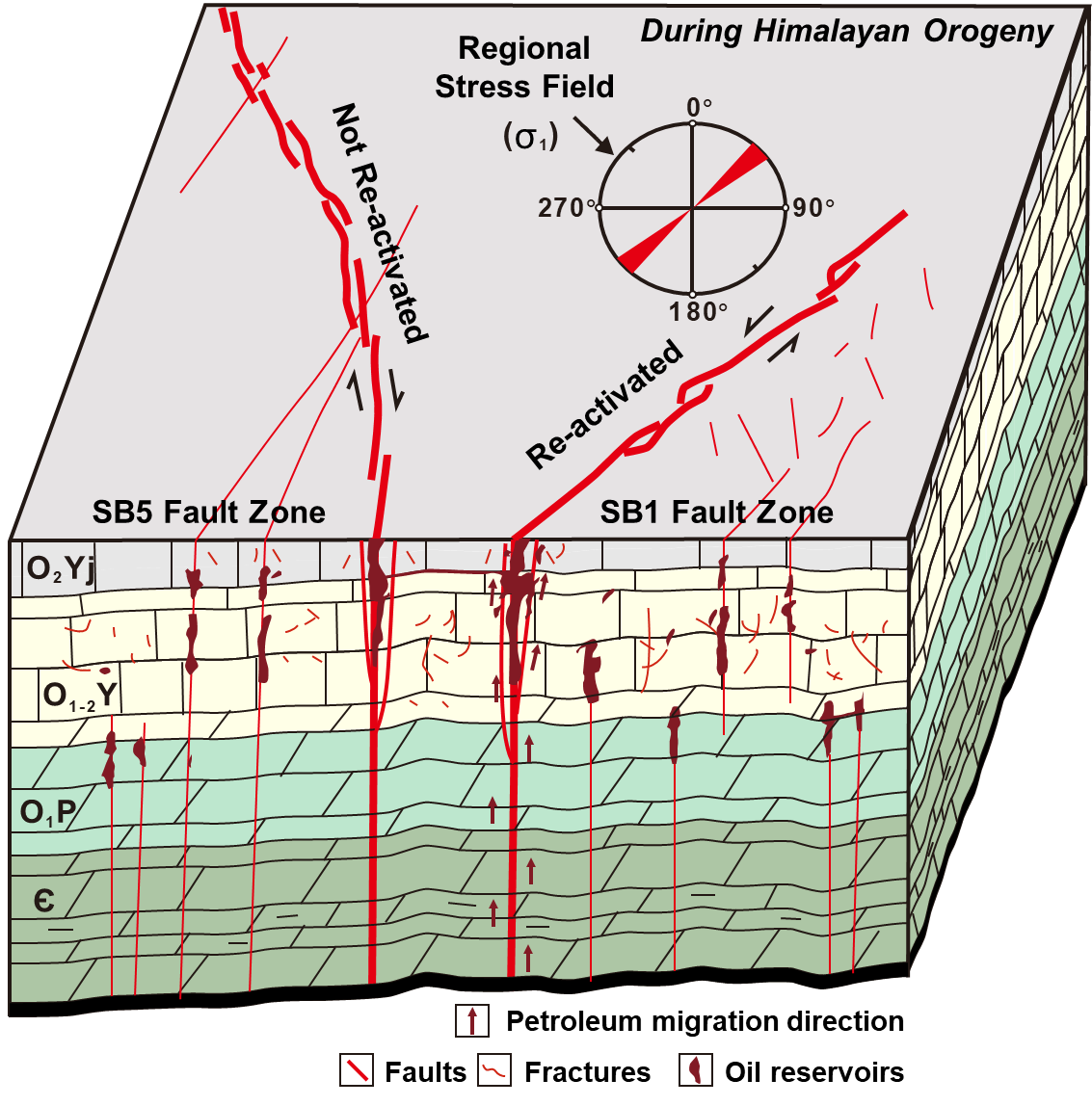The Tarim Basin, with an area of 5.6 × 105 km2, is the largest petroliferous basin in China. Since the discovery of the Shunbei oilfield in 2016, considerable hydrocarbon reserves have been explored in Lower-Middle Ordovician carbonate reservoirs situated surrounding two conjugate strike-slip fault zones, i.e. the SB1 and SB5 fault zones, in the Shunbei oilfield, Tarim Basin, northeast China.
Through the integrated analysis of crude oil physical properties, geochemical compositions and fluid inclusions, the differential petroleum charging history of the Shunbei oilfield has been investigated. For the SB5 fault zone, two discrete ranges of homogenization temperature of coeval aqueous inclusions indicate intense charging during the early Yanshan orogeny, with minor charging during the late Himalayan orogeny. For the SB1 fault zone, the extended homogenization temperature range probably reflects continuous charging from the early Yanshan to late Himalayan orogenies. The presence of bitumen indicates an earliest petroleum charging event during the late Caledonian orogeny. Differential petroleum charging during the Himalayan orogeny caused stark differences in the thermal maturity of trapped oil and the mixing of oil with variable maturity, with the SB1 fault zone receiving more intense charging of late-stage oils than the SB5 fault zone. The differential petroleum charging during the Himalayan orogeny can be explained by preferential reactivation of NE-trending strike-slip faults, controlled by the regional NE 45° oriented compressive stress field. Crude oil with high maturity would preferentially migrate vertically via the reactivated NE-striking SB1 fault zone, charging into reservoirs, resulting in the current maturity differences in the trapped oils in the Shunbei oilfield. These results illustrate the preferential vertical petroleum migration along the re-activated fault and the controlling role of regional stress field on fault behaviors.

Fig 1. Model for differential petroleum accumulation mechanism of the Shunbei Oilfield during the Himalayan Orogeny.
CITATION: Fuyun Cong, Jinqiang Tian*, Fang Hao*, Qi Wang, Jianzhang Liu, and Zicheng Cao, 2023, Differential petroleum charging controlled by movements of two strike-slip faults in the Shunbei area, Tarim Basin, northwestern China. AAPG Bulletin, https://doi.org/10.1306/12152319179.

